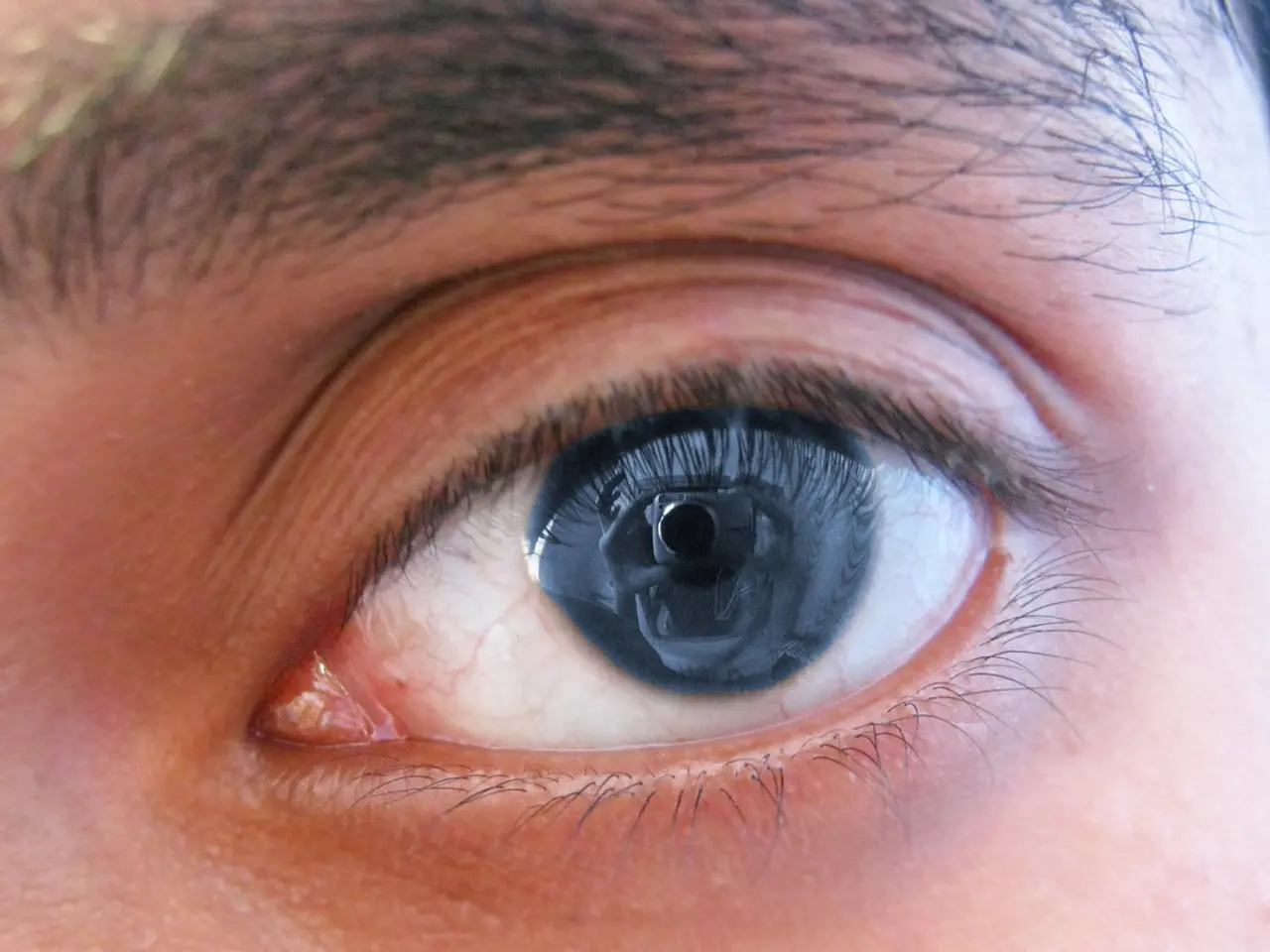Floaters in the eye: Understanding their origins and potential remedies
Eye floaters, those pesky dots or specks that seem to dance across your vision, are a common occurrence, especially as we age. While they are usually harmless, a sudden increase in eye floaters can be a cause for concern.
In most cases, eye floaters are caused by the vitreous body, a clear, gel-like substance that fills out most of the eye, starting to shrink and little fibers breaking away, forming stringy masses that can disrupt light coming into the retina. However, there are other potential causes that might require immediate medical attention.
Anyone who notices a sudden increase in eye floaters, especially when accompanied by flashes of light, vision loss, pain, or redness, should visit an eye doctor for a full diagnosis. Potential serious causes of an increase in eye floaters include retinal tears or detachments, inflammation (Uveitis), eye injury or surgery, and underlying health conditions such as diabetic retinopathy or vitreous hemorrhage.
Retinal detachment, in particular, can be a serious cause of eye floaters and is characterized by symptoms such as flashes of light, loss of vision in the sides of the eyes, and a sudden increase of floaters. This condition is a vision-threatening emergency that requires immediate medical care to prevent permanent vision loss.
Other symptoms that might accompany a serious increase in eye floaters include blurred or distorted vision, loss of peripheral or central vision (suggesting retinal detachment or other serious retinal issues), and pain or redness (suggesting inflammatory causes such as uveitis).
Because these symptoms can indicate potentially vision-threatening conditions, any sudden increase in floaters, especially when combined with flashes, vision loss, pain, or redness, warrants urgent evaluation by an eye care professional.
In rare circumstances, floaters may become very dense and disrupt a person's vision, and a doctor may recommend a procedure called a vitrectomy, where the vitreous gel causing the floater is surgically removed and replaced with a saline solution, or a bubble filled with gas or oil.
It's important to note that laser vitreolysis, an alternative treatment to break apart or dissolve larger floaters, is not for everyone and an ophthalmologist needs to do a complete diagnosis in each case.
Eye floaters are a normal part of the aging process, with conditions such as vitreous detachment, which causes more floaters, being more common after the age of 60. Prevention practices to keep the eyes healthy include maintaining a healthy weight, eating a varied, nutritious diet, quitting smoking, wearing sunglasses outdoors, and wearing protective eyewear when necessary.
In conclusion, while eye floaters are generally harmless, a sudden increase can be a sign of a serious issue. If you experience any of the symptoms mentioned, especially a sudden increase in floaters or flashes of light, it is critical to seek an eye exam promptly to rule out serious conditions and prevent vision loss.
- The vitreous body, a common cause of eye floaters, begins to shrink as we age, leading to tiny fibers breaking away and forming stringy masses that may signal an onset of ulcerative colitis or other medical-health conditions.
- Diabetes and hepatitis, both underlying health conditions, can potentially cause an increase in eye floaters if the affected individual experiences diabetic retinopathy or vitreous hemorrhage.
- Atopic dermatitis, a type of skin inflammation, may exhibit retinal problems and contribute to the visibility of eye floaters due to the general state of the body's health and wellness.
- Those with a history of macular degeneration or retinal problems may find an increase in eye floaters troubling, as these conditions can be exacerbated by age-related changes in the eye.
- Migraine sufferers might experience an additional level of discomfort from eye floaters, as the symptoms of migraine can sometimes overlap with those indicative of vision problems.
- Depression, a mental-health concern, can manifest in various ways, including an overlooked increase in eye floaters that, left untreated, can progress to blindness if left undiagnosed.
- In the advanced stages of Alzheimer's disease, a degenerative brain disorder, patients might exhibit signs of visual disturbances such as eye floaters, further complicating an already challenging condition.
- Science has started to predict potential health issues based on patterns and trends observed in a patient's health status, including the occurrence of eye floaters and their relation to underlying medical conditions.
- A predictive approach to medical-conditions, including the growth of atopic dermatitis, diabetes, hepatitis, macular degeneration, retinal problems, migraine, blindness, depression, colitis, and Alzheimer's disease, can aid in identifying causes of eye floaters and prevent vision loss.
- Incorporating preventive practices such as maintaining a healthy weight, adopting a nutritious diet, quitting smoking, wearing sunglasses, and protective eyewear can support overall health-and-wellness, potentially decreasing the risk of developing eye floaters and associated health conditions.




